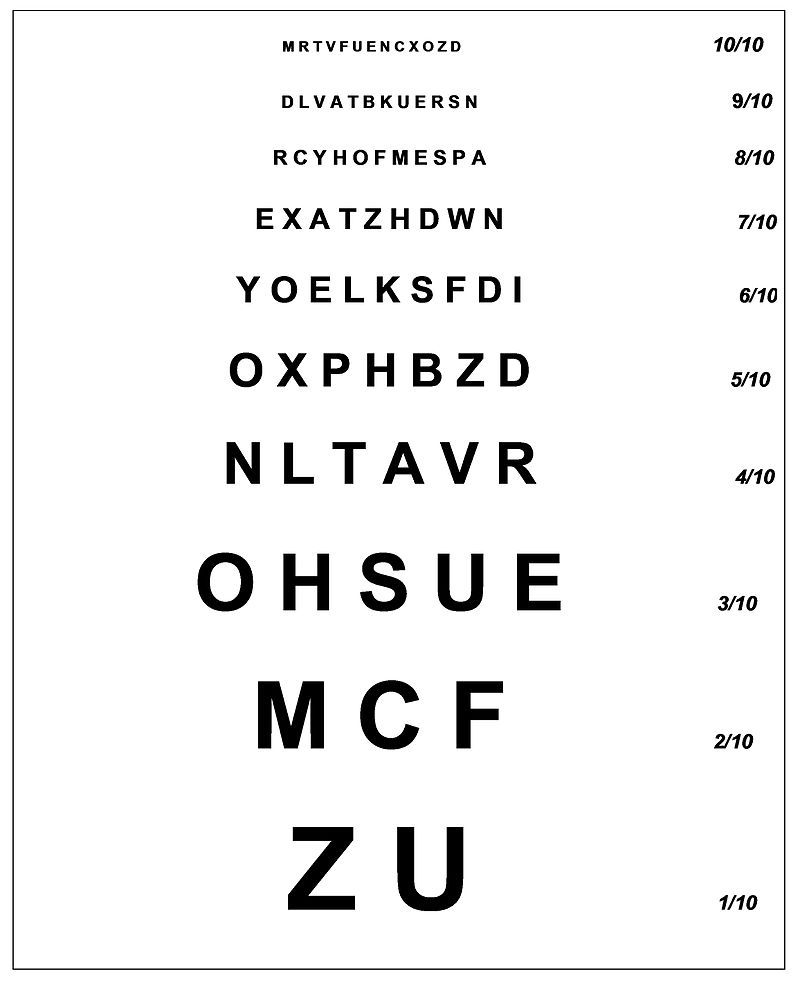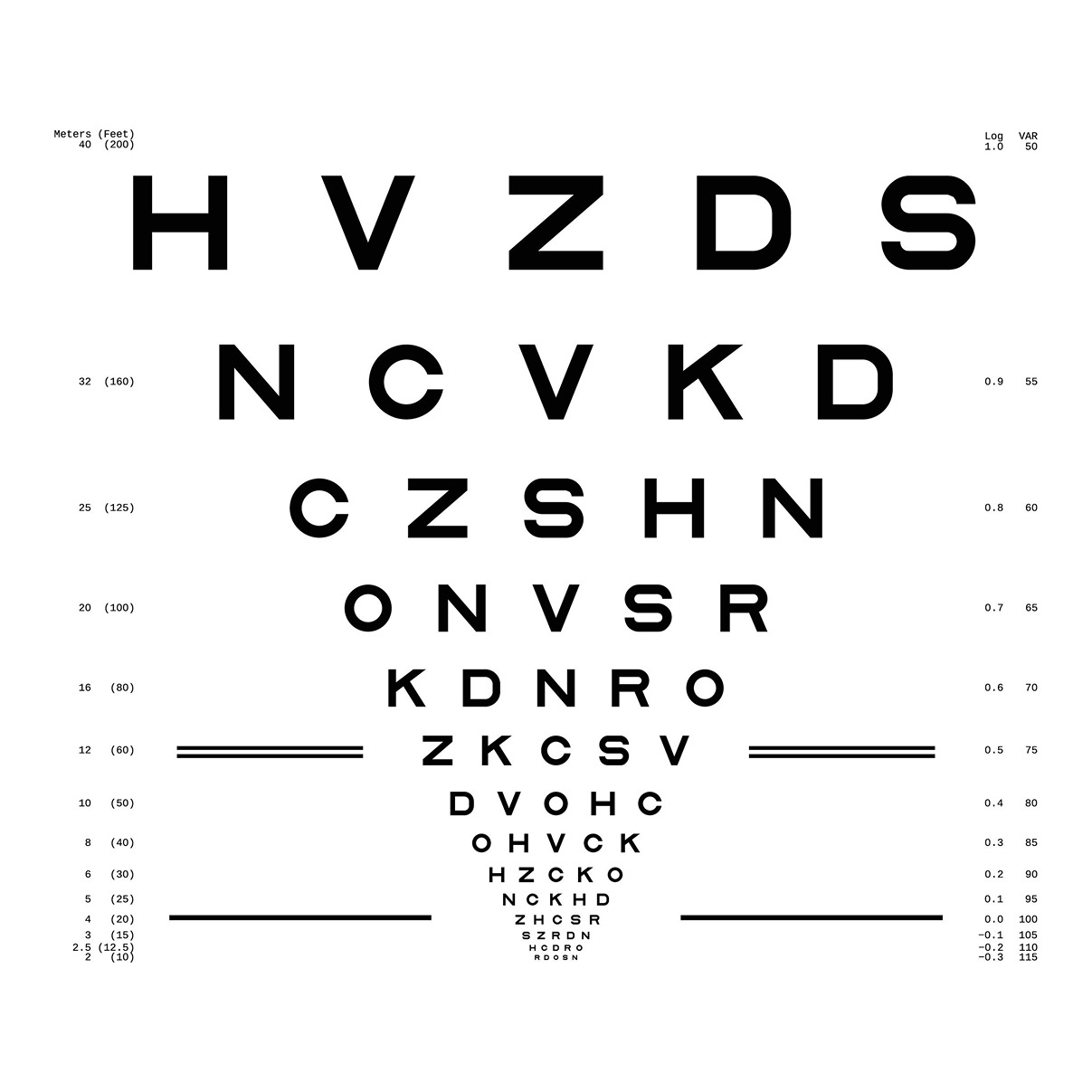A tribute to Ferdinand Monoyer
You’ve probably never heard the name Ferdinand Monoyer before, but he’s a pretty big deal in the ophthalmology field. Monoyer is best known as one of the leading figures in the development of the modern eye chart. Perhaps even more important than his work on the vision chart, however, Monoyer is credited with standardising the measurement of lens power called a dioptre. Although we don’t use Monoyer charts anymore, we’re all seeing clearer now thanks to his contributions.

A Brief Bio Of Ferdinand Monoyer
In 1836, Ferdinand Monoyer was born into a prominent French family in the city of Lyon. Sadly, Monoyer’s father, who worked as a doctor in the French military, passed away when his son was only five. After Monoyer’s father passed away, his mother quickly remarried a man named Victor Stoeber. At that time, Dr. Stoeber was a prominent eye specialist at the University of Strasbourg.
It’s clear that both Monoyer’s father and Dr. Stoeber had a major influence on Monoyer’s decision to enter the medical profession. After studying at both the University of Strasbourg and the University of Nancy, Monoyer worked at both universities and eventually accepted a professorship at the University of Lyon. Monoyer worked at the University of Lyon until 1909 and passed away three years later. For those who are interested, you could still find Monoyer’s grave in Lyon’s Cimetière de la Guillotière.
Monoyer’s Enduring Achievements
Monoyer’s legacy in the eye care community rests on two accomplishments that are closely related: his eye chart and the formulation of a dioptre.
Most eye care clinics no longer use the exact chart Monoyer developed, but his design served as the basis for all modern eye charts. Interestingly, Monoyer’s eye cart is the reverse of what is commonly used today, having the largest letters on the bottom and the smallest on the top. In total, there are ten lines of letters on a standard Monoyer chart.
The important feature of the Monoyer chart is that each row of letters corresponds with a different visual acuity that Monoyer measured in dioptres. Basically, a dioptre measures how far away from a letter you’d need to be to clearly see it.
Monoyer measured these dioptres in meters. The power of these lenses equals 1 meter divided by the focal length gathered from the eye screening. So, a 1-meter focal length equals 1 dioptre. Eye doctors continue to use dioptres when giving out visual prescriptions because they are easier to deal with than just focal lengths.
Fun Fact About Monoyer Chart
One of the most interesting features of Monoyer charts is that Dr. Monoyer hid his name in them. Just take a look at the rows of letters on the right and left sides of the chart. You should see “Monoyer” spelt out on the left and “Ferdinand on the right.”
When Google celebrated Ferdinand Monoyer’s 181st birthday in 2017, they showed this famous chart in their Doodle. You can check out this charming Doodle on this webpage.
Was Monoyer The First To Invent The Eye Chart?
Although Monoyer gets a great deal of credit for the modern eye chart, he’s not the first person to create one. Indeed, most scholars are in agreement that German ophthalmologist Heinrich Küchler (b.1811—d.1873) deserves credit for creating the world’s first eye chart.
In the 1830s, Küchler began taking clippings out of various books and arranging them vertically from large to small on sheets of paper. In addition to letters, these early visual charts included pictures of animals and various symbols. Küchler eventually formalized this visual chart in the 1840s using only letters arranged from largest to smallest from top to bottom.
The main reason we remember Monoyer rather than Küchler today is mainly because of Monoyer’s invention of dioptres. Most researchers believe, however, that Monoyer was inspired by Küchler’s efforts.
Monoyer Vs. Snellen Charts
There’s a third European doctor who lays claim to creating the most significant eye chart in the mid-1800s.
You might be more familiar with the Danish doctor Herman Snellen than Monoyer and Küchler. Just like Monoyer, Snellen named his eye chart after himself, but his eye chart was more widely distributed across Europe, Australia, and the USA. Believe it or not, Snellen charts are still used in many opticians’ offices around the world.
Snellen was born in Zeist, Netherlands, in 1834. In the 1850s, Snellen followed in his father’s footsteps and studied medicine at nearby Utrecht University. Shortly after graduating, Utrecht University hired Snellen as an ophthalmology professor, a post-Snellen held for most of his life before passing away in 1908.
During the early 1860s, Snellen first developed his now-famous eye chart. Most people immediately recognise Snellen’s chart by the huge “E” that’s usually placed at the top of the chart. Below this “E” there are 10 increasingly smaller lines with one additional letter per line until the lines reach eight letters.

Before Snellen created his chart, optometrists around the West had different ways of measuring the visual acuity of their patients. Some doctors asked patients to read out sentences from a distance, but this posed major challenges. First, patients could potentially guess the next word in each sentence, which could significantly alter the test results. Second, doctors couldn’t use these tests to measure the eye health of illiterate patients.
Snellen’s chart helped to simplify and standardise the vision screening process in the medical field. Snellen also created what’s now known as a “Tumbling E” chart for young children and illiterate patients. As the name suggests, this chart looks similar to a standard Snellen chart, but it’s only composed of the letter “E” turned in different directions.
Snellen’s eye chart was released only about 10 years before Monoyer’s chart and there are significant differences. In addition to adding his dioptre measurements and placing the largest letters on the bottom, Monoyer got rid of the cross strokes Snellen used on certain letters. Monoyer believed making the letter’s font as simple as possible was the best way to get an accurate reading, and most modern-day optometrists agree with Monoyer’s font preference.
Advances In Eye Chart: LogMAR
Short for “Logarithm of the Minimum Angle of Resolution,” the LogMAR chart was created in the early 70s by a group of scientists at the National Vision Research Institute of Australia. This chart is celebrated because every line has five letters and the spacing has been formulated to be the same for each line.
The LogMAR test is widely recognised around the world as a more accurate measurement of visual acuity, especially so with lower visual acuities., because of this many sports prefer the athlete's sight to be classified using the LogMAR test.
Depending on where you have your eyes tested may decide on which test is used. Although LogMAR is gaining popularity, in the UK the Snellen test remains the most popular.

Unlike the Snellen, all of the LogMAR letters are made using a more neutral Sloan-style font without ornamentation. Like the Snellen, however, the letters are large on the top and get smaller the further down a person reads. So, in a sense, the LogMAR blends the best of both the Monoyer and Snellen charts in one design.
Are Hi-Tech Eye Charts Reliable?
As technology advances, it might seem strange to some patients that doctors still rely on these eye charts to determine visual acuity. You would assume that electronic vision tests would be superior to these old eye screening methods, but that's not necessarily the case.
Interestingly, science has shown that electronic screening charts are not superior to standard vision tests...at least not yet. A study out of the University of Melbourne tested the accuracy of a traditional Snellen eye chart versus a mobile phone-based Snellen chart with over 80 patients. Their results clearly showed that standard Snellen charts were more reliable than dozens of different Snellen apps available on the App Store.
Eye Tests Remain The Gold Standard
Monoyer and Snellen put out their eye charts at a critical moment. During the 1800s, Europe was in the midst of the Industrial Revolution, and good eyesight was a necessity for many new professions. Doctors needed reliable measures of people’s visual acuity, and both Monoyer and Snellen’s tests fit the bill.
But Monoyer and Snellen’s accomplishments are far more than just history lessons. As noted above, eye charts inspired by these doctors are still in use today. Plus, if you get a prescription for lenses, then it will most likely be written using dioptres!
NHS optometrists now recommend everyone below the age of 40 get an eye exam at least once every two years. Children as young as 16-months can visit an optometrist for a vision screening. After 40 years of age, patients should see an eye doctor at least once every year to check for more serious diseases like glaucoma and age-related macular degeneration.
Author: John Dreyer Optometrist Bsc(Hons), MCOPTOM, DipCLP
Created: 27 Apr 2023, Last modified: 7 Jan 2025

